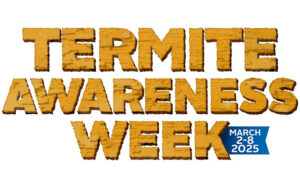
PHOTO: MATTIAATH/ISTOCK / GETTY IMAGES PLUS/GETTY IMAGES
Ten industry leaders offer products, predictions and strategies to help pest management professionals (PMPs) detect, treat and prevent rodent infestations.
BASF – Sylvia Kenmuir, BCE, senior technical services representative, professional & specialty solutions

Sylvia Kenmuir, BCE
Recent innovations: To avoid bait resistance when treating rodent infestations, changing the bait’s mode of action can be a critical component of overall control. When taking this step, it’s important to understand that patience will be required for both technicians and customers because it may take time for the new program to work.
BASF’s Selontra Rodent Bait (pictured) is an excellent option for PMPs looking to change up their baiting programs. Its advantages include its effectiveness against anticoagulant-resistant rodents and the stop-feed action of its active ingredient (AI), cholecalciferol, which allows for shorter baiting cycles. Studies have shown this means that it takes less bait to kill populations. Cholecalciferol also poses a lower risk for secondary poisoning to birds and non-target mammals, which is important in areas concerned about this issue. Online at Bit.ly/3BZKksG, BASF offers a downloadable “Selontra Switch Technical Bulletin” PDF explaining how to make the switch and what to expect after the changeover.

PHOTO: BASF
Available later this year, BASF’s Prelontra Rodent Monitoring Soft Block can be used prior to baiting with Selontra Rodent Bait. PMPs can use this nontoxic formulation at accounts to monitor rodent activity, which will help determine when and where Selontra Rodent Bait treatments are necessary.
Predictions: Regulatory pressure will continue to grow nationwide, with more proposed regulations relating to anticoagulant rodenticides. As we watch and work through California’s ever-changing laws concerning anticoagulants, the pressure is being felt across the country to evaluate and modify rodent control programs. Understanding and using different modes of action can help PMPs become flexible if a change in AI is needed. It also can improve programs for resistant rodent populations.
Bell Laboratories – Patrick Lynch, ACE, chief commercial officer, and president, Bell Sensing Technologies

Patrick Lynch, ACE
Recent innovations: The launch of CADET, our new cholecalciferol rodenticide blox (pictured), is part of Bell Labs’ ongoing commitment to ensuring our distribution and PMP partners always have access to effective control products, regardless of the regulatory or legislative environment. This new D3 formulation is durable, weatherable and mold- and moisture-resistant, so it can be used indoors and out. It is available from pest control distributors nationwide.
Bell Labs’ latest product innovation is the Mouse iQ snap trap. The Mouse iQ becomes the seventh iQ product and completes our iQ smart rodent product portfolio. Like the T-Rex iQ, now PMPs can use the same time savings and safety benefits these products provide, which include never having to check empty traps and only climbing ladders when there is a verified catch. Mouse snap-trapping has long been labor-intensive, with only manual options available. Products like the Mouse iQ snap trap take the pain points out of mass snap-trapping protocols, which are necessary for proper
mouse control because of their biological capabilities. The Mouse iQ is, quite literally, the better mouse trap — and will be available later this month.

PHOTO: BELL LABS
Predictions: The pest control industry faces growing regulatory hurdles. To effectively manage rodent infestations in this evolving landscape, we must improve our understanding of rodent activity at each account. In partnership with our valued distributors and PMPs, Bell Labs is dedicated to advancing monitoring technologies and providing the support needed to navigate these challenges.
Catchmaster Pro – Ed Dolshun, technical director and VP of business development

Ed Dolshun
Recent innovations: Catchmaster Pro’s No. 611 Dual Action Twin Catch multi-catch device (pictured) is designed to integrate seamlessly with our trusted No. 72TC glue boards and No. 605 or No. 607 mouse snap traps, offering versatility and innovation in pest management.
The No. 611 features a raised roof, allowing for diverse trapping configurations. The 72TC glue board can be folded along its built-in perforation to serve as an exclusion wall. This setup prevents direct rodent contact with the glue board, enabling PMPs to target cockroaches and other crawling insects. For sensitive accounts where clients prefer rodent traps without glue boards, the No. 611 provides an ideal solution. Enhance its effectiveness by pairing the glue board with a No. 701 cockroach attractant tablet.
As rodent pressures continue to escalate globally, regulations are becoming increasingly stringent with no signs of easing. In response, we are advancing our product line with a newly improved 621 Snap Trap that features alternative baiting options to increase efficacy and allow deployment at any angle. We plan to launch these enhanced traps later this year.

PHOTO: CATCHMASTER PRO
Predictions: IEvolving climate patterns, including warming trends and extended breeding seasons, are creating favorable conditions for rodents worldwide. Longer growing seasons expand food availability and act to fuel increased birth rates. In response, PMPs must adopt robust integrated pest management (IPM) strategies that prioritize habitat modification, elimination of conducive conditions, and exclusion methods.
Trapping will play a pivotal role in future rodent control, especially as regulations grow more restrictive and traditional tools become less accessible. Using remote sensing devices like cameras and smart stations will help PMPs pinpoint trouble areas and highly refine their programs. High-performance traps, enhanced attractants, and refined techniques will be essential to effective pest management programs. At Catchmaster Pro, we’re ready to support PMPs with the innovative solutions they need to meet these evolving challenges head-on.
J.T. Eaton – Isabelle Lucero, education and compliance officer

Isabelle Lucero
Recent innovations: J.T. Eaton always has been committed to providing products to help people with their pest problems big and small, while still following IPM practices.
Our solution-based think tanks have been working hard on our IPM product lines, focusing on camouflaged products: disguised pest control in plain sight. We are ready to release the ultimate camo-IPM-all-in-one pest control tool, called — wait for it — the J.T. Eaton Trojan Horse. For those of you who couldn’t make it to PestWorld 2024 to see our new, trademarked J.T. Eaton Trojan Horse in person, we are pleased to offer you this top-secret sneak peek!
The J.T. Eaton Trojan Horse is an IPM tool disguised as a sign. It can be placed in plain sight. Its groundbreaking design features a drawer that can be opened using a Radio Frequency Identification (RFID) key. This means all you have to do is hold the key near the drawer and it will open.

SCREENCAP: PMP STAFF
Inside the J.T. Eaton Trojan Horse, which also doubles as a tamper-resistant bait station, there is space for any of the tools you may want to use to control all types of pests including snap traps, rodenticide baits, live traps (both Repeater and Little Pete can fit), glue traps, insecticides, growth inhibitors, birth control and more. The signage part of the J.T. Eaton Trojan Horse also can be personalized for any desired use.
This new product will allow technicians to place it anywhere to control pests, as being out of sight is no longer necessary.
Predictions: Our industry is gearing up for more severe restrictions being imposed by the U.S. Environmental Protection Agency (EPA) on first- and second-generation rodenticides. Some states are beginning to enforce state-specific rodenticide regulations. As a result of these restrictions on rodent control products, we predict rodent problems will increase. Therefore, we stress the importance of innovation and thinking outside the box going forward, especially by using IPM practices and more modes of action to control rodent problems.
Neogen – Andrew Fisher, BCE, PHE, business unit specialist

Andrew Fisher, BCE, PHE
Recent innovations: SureKill Command (pictured) contains the AI bromadiolone, a single-feed, second-generation anticoagulant that provides effective control after a lethal dose is consumed. Command was designed to mimic naturally occurring food sources, including grains and seeds, while combined with other food-grade ingredients. This powerful combination creates an irresistible formulation for effective control in most environments. Whether for maintenance or cleanout, Command consistently provides PMPs with the tools to control even the toughest rodent infestations.
While Command is a great standalone bait, rotational baiting with different AIs, formulations and presentations is a great way to reduce bait aversion. The SureKill line also includes:
SureKill Guardian Blocks contain the first-generation anticoagulant diphacinone and provide great value for everyday control of rats, mice and other non-commensal rodents. Multiple-feed qualities reduce concerns of bait shyness, making it an easy choice when used in a rotation program or as a maintenance bait.

PHOTO: NEOGEN
SureKill Assault Blocks feature a single-feed bromethalin formulation that requires less bait to be consumed. Assault Blocks are an ideal solution in situations that require non-anticoagulant baits or quick knockdown within large populations.
Predictions: Reducing the risk of non-target exposure has been and will continue to be a primary focus of manufacturers. Changes within major federal and state regulatory groups highlight the importance of ongoing stewardship. Industry stewardship can include everything from using monitoring blocks instead of rodenticide to diagnose infestation levels, using snap traps to reduce the amount of active bait placed, and familiarizing yourself with the EPA Tier System of tamper-resistant stations — which are described online.
Having a steady rotation of different AIs and formulations is a great way to ensure you are prepared for future regulatory changes
Nisus – Dr. Jamel Sandidge, BCE, national director of technical services

Dr. Jamel Sandidge, BCE
Recent innovations: Nisus DSV is a broad-spectrum disinfectant, sanitizer, virucide, mildewstat, fungicide and deodorizer concentrate labeled to kill dozens of pathogen strains. It has become an industry standard for reducing disease transmission risks from rodents, wildlife, cockroaches and flies. DSV is easy to mix and simple to apply in thousands of locations and situations with minimal equipment.
When ectoparasites and pathogens are an issue at rodent accounts, ready-to-use Steri-fab is another tried-and-true product to help eliminate the threat. Steri-fab even can be used on soft surfaces to eradicate listed ectoparasites and pathogens and to help deodorize lingering odors from infestation.

PHOTO: NISUS
Predictions: PMPs sometimes forget the primary negative impacts of rodents occur through their role as reservoirs and vectors of infectious diseases that can be transmitted to humans, pets and other animals. Rodents continuously move throughout homes, public places and sensitive areas, leaving a trail of infected feces, urine and other bodily fluids.
With the looming threat of rodenticide reductions, bans and mandates, rodent services are getting increasingly complicated. More frequent visits, dead rodent removal and disposal, and vigilant monitoring efforts are in the future. We can expect increasing rodent populations and increased exposure to the infectious diseases they carry. This makes mitigating the vector and the pathogens they transmit even more critical.
Many pathogens can survive and remain infectious for hours, days and even months after the organisms have been eliminated. The industry must continue to control rodent populations while also reducing the risks associated with the pathogens and parasites rodents carry and introduce into human-associated areas.
Disinfection and sanitation during and after rodent control efforts are becoming instrumental to rodent service protocols. They will become even more integrated into the service and be seen as crucial as snap traps, rodenticides, bait stations and rodent monitoring devices.
PelGar USA – Andrej Branc, Americas business manager

Andrej Branc
Recent innovations: Of the recent innovations PelGar has introduced in the past five years, few have impacted the market as our RoBan Barrier Non-Toxic Paste (pictured) has. This exclusion compound seals cracks, seams, holes, gnawed openings and other open areas to prevent entry from rodents and other pests. Using a caulking gun, it is quick and easy to apply onto many surfaces, inside and out. It is instantly waterproof, paintable when dry and unaffected by extreme temperatures.
Our focus in the past three years has been to broaden the types of products we offer while continuing to innovate in this way. The new bait stations we have introduced align with that focus on innovation. We believe the Vanguard Heavy and the Mouse Snap stations specifically will set a new market standard.
We are particularly proud that all our bait stations and the Vanguard Heavy base are 100 percent recycled and 100 percent made in the United Kingdom, which is still the home base for PelGar. We have combined these stations with other innovative products, including the PelTrap NZ snap traps for rats and mice and our new RoBan Gold Entrap monitoring gels. Our monitoring gels are available in four synthetic, non-allergen flavors: amaretto, apple, peanut butter and vanilla. They are the ideal tools to use in our new bait stations and snap traps.

PHOTO: PELGAR
Predictions: The regulatory and chemical product restrictions from end-user locations in the rodent segment will require PMPs to adapt to new regulations, training, testing and product purchasing requirements. They also must change how they look at rodent work and their product mix. Better use of non-chemical products to identify target species and low-risk treatment options will become a key part of the overall rodent control program PMPs will use.
The professional segment of rodent control will grow immensely in the next five years, and those who adjust to the changing landscape will do very well.
SenesTech – Rochelle Paulet, director of marketing

Rochelle Paulet
Recent innovations: PMPs face an ongoing challenge of controlling rapidly growing rat populations. Traditional methods often struggle to keep pace with the problem, but SenesTech is transforming rodent control with two of its trademarked, groundbreaking products: Evolve Rat and Evolve Mouse. These contraceptive soft baits target reproduction, the root cause of infestations. Evolve products deliver sustainable, long-term population control by preventing rats and mice from reproducing.
Features include:
- Fertility disruption. Evolve Rat and Evolve Mouse restrict rodent reproduction, addressing the problem at its source.
- IPM compatibility. These solutions seamlessly integrate into IPM strategies, enhancing the efficacy of existing methods.
- Pesticide-free innovation. The lack of a rodenticide makes them usable in sensitive areas.
- No bait aversion. Rodents readily consume the bait without developing resistance or behavioral aversions, ensuring ongoing effectiveness.
- Eco-friendly solution. Evolve products provide a non-lethal solution, minimizing environmental impact while achieving control.

IMAGE: SENESTECH
Predictions: As the pest control industry evolves to address increasing regulatory restrictions, environmental concerns, and customer demand for sustainable solutions, we predict fertility control baits will redefine best practices for IPM programs by:
- Supporting regulatory compliance. We offer PMPs an EPA-registered alternative to traditional rodenticides.
- Driving industry innovation. We are setting a new benchmark for sustainable pest control by focusing on long-term population management rather than short-term knockdowns.
- Enhancing professional credibility. We equip PMPs with advanced solutions that improve customer satisfaction by delivering visible, sustainable results.
- Expanding IPM applications.
Our products are becoming a critical component in managing rodent infestations in urban, agricultural and industrial settings while reducing environmental and non-target impacts.
Skyhawk Trapmate – Mitch Goldstein, director of sales

Mitch Goldstein
Recent innovations: Skyhawk Trapmate’s advanced hubs and sensors deliver instant alerts when traps are triggered, eliminating the need for unnecessary site visits. Our latest data and analytics capabilities advancements empower PMPs to make more proactive, data-driven decisions. By identifying patterns in rodent activity and trap performance, users can optimize placement strategies and address potential issues before they escalate.
Key features include robust, reusable devices, long-lasting battery life, a user-friendly app for monitoring, and compatibility with most traps. Trapmate helps PMPs enhance efficiency, reduce operational costs and deliver a superior service to their clients.
We are committed to sustainable, scalable solutions. One of our key 2025 initiatives includes developing an affordable rodent box designed for snap traps and our advanced sensors, eliminating the need for rodenticides. This eco-friendly solution addresses regulatory restrictions and the demand for green practices.
Another project for 2025 includes home monitoring systems focused on moisture mitigation, targeting conditions that increase the risk of termites, mold, mildew and wood rot. By monitoring humidity and identifying problem areas, this solution helps prevent structural damage and health hazards.

PHOTO: SKYHAWK TRAPMATE
Predictions: We anticipate steady growth in the rodent control segment over the next five years, driven by urban expansion, stricter rodenticide regulations, and increased demand for sustainable solutions. Technology integration, such as remote monitoring and data analytics, will be a key driver of innovation, enabling PMPs to optimize their strategies and deliver more effective results.
We’re proud to be at the forefront of this evolution, committed to leading the market with forward-thinking solutions.
Tactacam – Dave Mathis, VP of sales, PMP division

Dave Mathis
Recent innovations: Tactacam is a leading manufacturer of cutting-edge cellular cameras, specializing in remote monitoring solutions for pest activity. Our Reveal cellular cameras provide real-time, high-quality images and videos sent directly to your mobile device via cellular networks. This allows PMPs to monitor rodent and other pest activity in real time, identify entry points and differentiate between genuine threats and false triggers.
Reveal provides PMPs with the ability to access data remotely through the paired app, receive instant alerts and review video footage, streamlining decision-making and response times. This integration can enhance operational efficiency, improve customer transparency and support data-driven pest control strategies.

PHOTO: TACTACAM
Predictions: Technology advancements, particularly the use of cameras, are set to revolutionize the industry by improving efficiency. Camera systems equipped with motion detection and night vision will enable continuous monitoring, reducing the need for manual inspections. They can help identify false triggers, pinpoint pest entry points and capture valuable data on pest behavior. Real-time alerts will allow faster responses to infestations, while video evidence enhances customer transparency by demonstrating activity and supporting treatment decisions.
By targeting interventions more effectively, camera technology also promotes environmentally friendly practices, reducing the need for treatments. Integrating these systems with artificial intelligence and the internet of things (IoT) could further optimize pest management strategies, providing a holistic approach to monitoring and controlling pests. As these innovations become more accessible, PMPs will be better equipped to deliver efficient, sustainable and highly effective pest control solutions.
<p>The post Products to maximize your rodent results first appeared on Pest Management Professional.</p>
from Pest Management Professional https://www.mypmp.net/2025/02/19/products-to-maximize-your-rodent-results/
Sacramento CA






































